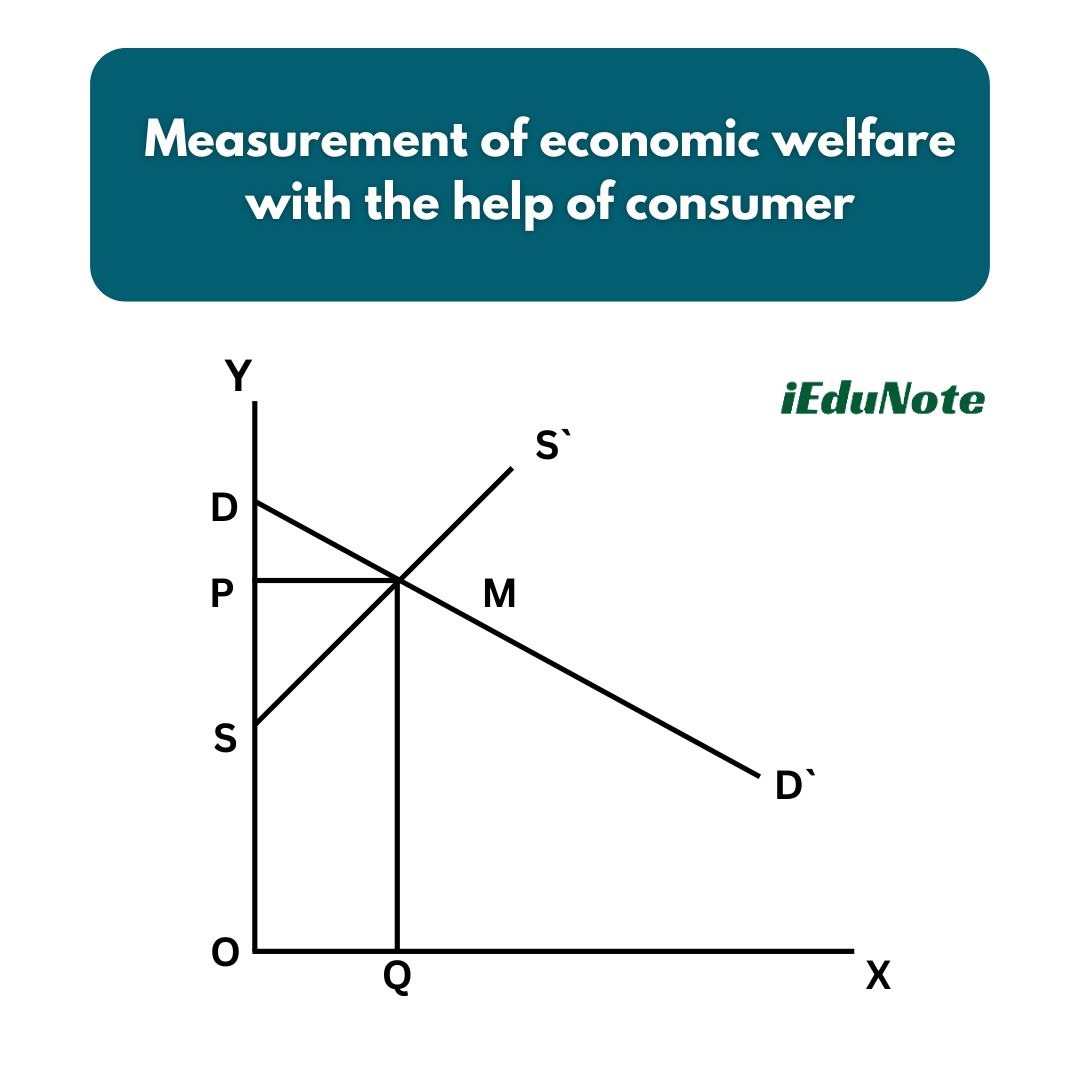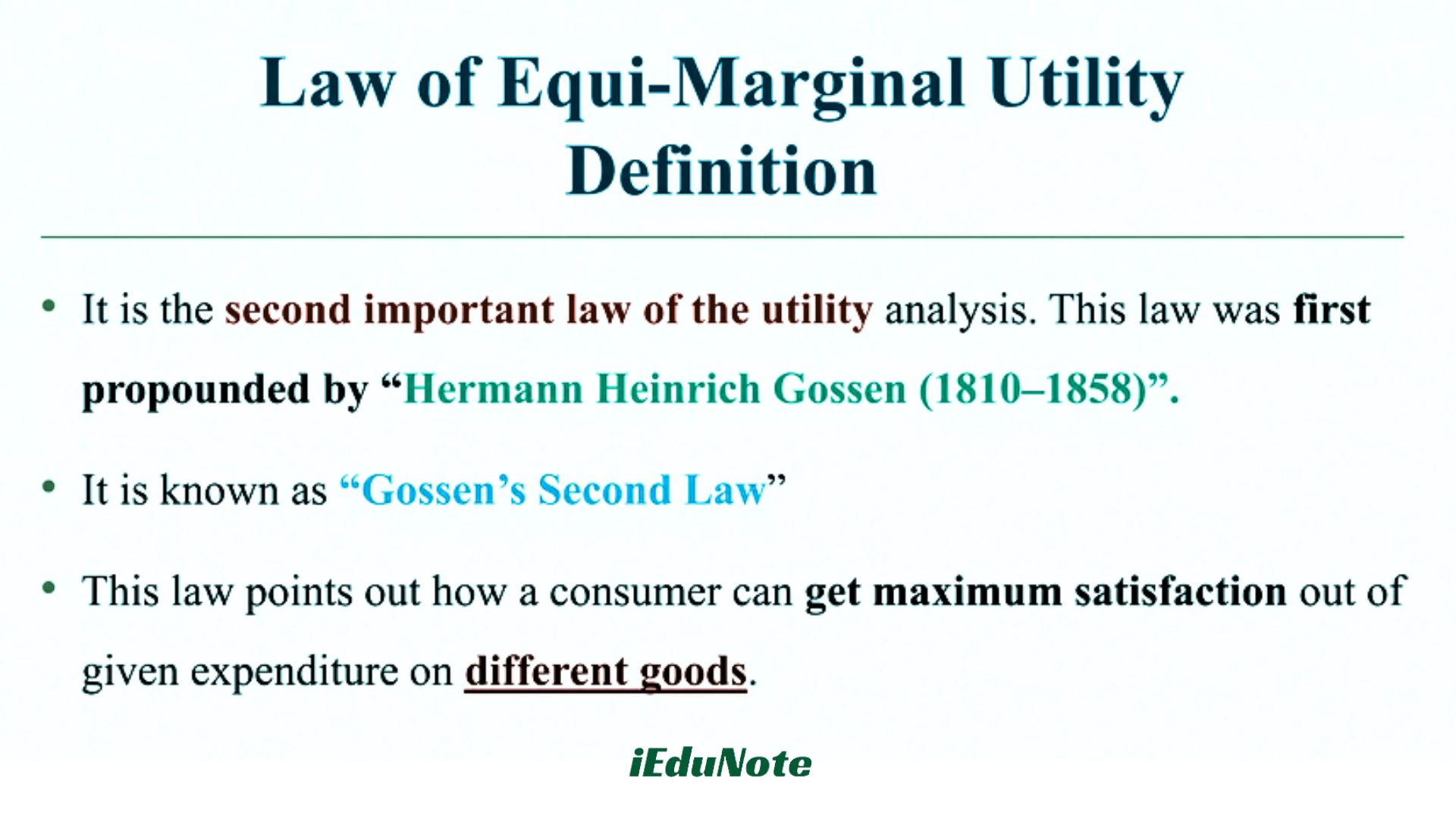The difference between the price a consumer is willing to pay and the price he pays is the consumer’s surplus. On the other hand, the difference between the revenue a producer earns by selling his product and the cost incurred in producing the product in the producer’s surplus.
Economic welfare can be measured by summing up the consumer’s surplus and producer’s surplus. We know that market equilibrium is attained where demand equates the supply. The price which is determined in the equilibrium point is the equilibrium price.
At the equilibrium price, the summation of the Consumer’s surplus and producer’s surplus indicates the economic welfare which is shown below:

In the graph, the OX axis indicates the quality of the product, and the OY axis indicates the price.
Here DD’ is the demand curve and SS’ is the supply curve. The DD’, and SS’, curves intersect at point M. Therefore, M is the equilibrium point.
Accordingly, the equilibrium price is OP and the equilibrium quantity is OQ. According to the figure, the consumer’s surplus = OQMD-OQMP = PMD, and the producer’s surplus = OQMP-OQMS = SMP.
Therefore, at OP price if OQ commodity is produced and consumed, then economic welfare = PMD + SMP = SMD.
Thus, economic welfare can be calculated by summing up the consumer’s surplus and the producer’s surplus.

